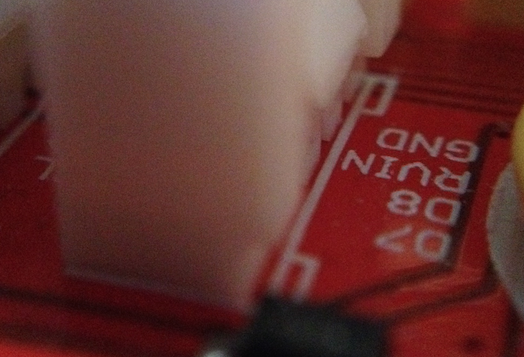Okay, I’m trying to solve this and have been both reading post after post and wiki entry after entry and I’m nowhere still.
Here’s the thing. The Stalker (most versions) have two Grove connectors: 1 x I2C and 1 on D7/8. This is great because it means you really shouldn’t need a Grove shield if your project only has one or two Grove devices, like mine does.
On the I2C I have a Barometer. It was plug-and-play. The data came in, everything was perfect. Until I went to attach the DHT11 on the D7/8 Grove connector… which failed, or at least returns no useful data.
It comes down to the PIN
#define DHTPIN A0 // what pin we're connected toThe DHT test and lib uses A) which is the address of the A0 connector on a Grove shield, not the analog pin A0. The DHT11 is digital, but like all Arduino bases you can access an analog pin as a digital one by using its digital pin #. For which there seems to be zero documentation and it’s down to trial and error.
So, what I’m looking for is an answer as to how one uses the two built in Grove connectors on a Stalker without issues. I’ve got one (the barometer) working and I’d like be able to get dew-point / humidity from the DHT11 at the same time, optimally with no additional shields.
Ideas? Anyone?
The code I’m using is bog standard stuff. No funny business here.
[code]// Example testing sketch for various DHT humidity/temperature sensors
// Written by ladyada, public domain
#include “DHT.h”
#define DHTPIN A0 // what pin we’re connected to
// Uncomment whatever type you’re using!
#define DHTTYPE DHT11 // DHT 11
//#define DHTTYPE DHT22 // DHT 22 (AM2302)
//#define DHTTYPE DHT21 // DHT 21 (AM2301)
// Connect pin 1 (on the left) of the sensor to +5V
// NOTE: If using a board with 3.3V logic like an Arduino Due connect pin 1
// to 3.3V instead of 5V!
// Connect pin 2 of the sensor to whatever your DHTPIN is
// Connect pin 4 (on the right) of the sensor to GROUND
// Connect a 10K resistor from pin 2 (data) to pin 1 (power) of the sensor
// Initialize DHT sensor for normal 16mhz Arduino
DHT dht(DHTPIN, DHTTYPE);
// NOTE: For working with a faster chip, like an Arduino Due or Teensy, you
// might need to increase the threshold for cycle counts considered a 1 or 0.
// You can do this by passing a 3rd parameter for this threshold. It’s a bit
// of fiddling to find the right value, but in general the faster the CPU the
// higher the value. The default for a 16mhz AVR is a value of 6. For an
// Arduino Due that runs at 84mhz a value of 30 works.
// Example to initialize DHT sensor for Arduino Due:
//DHT dht(DHTPIN, DHTTYPE, 30);
void setup() {
Serial.begin(9600);
Serial.println(“DHTxx test!”);
dht.begin();
}
void loop() {
// Wait a few seconds between measurements.
delay(2000);
// Reading temperature or humidity takes about 250 milliseconds!
// Sensor readings may also be up to 2 seconds ‘old’ (its a very slow sensor)
float h = dht.readHumidity();
// Read temperature as Celsius
float t = dht.readTemperature();
// Read temperature as Fahrenheit
float f = dht.readTemperature(true);
// Check if any reads failed and exit early (to try again).
if (isnan(h) || isnan(t) || isnan(f)) {
Serial.println(h);
Serial.println(t);
Serial.println(f);
Serial.println(“Failed to read from DHT sensor!”);
return;
}
// Compute heat index
// Must send in temp in Fahrenheit!
float hi = dht.computeHeatIndex(f, h);
Serial.print(“Humidity: “);
Serial.print(h);
Serial.print(” %\t”);
Serial.print(“Temperature: “);
Serial.print(t);
Serial.print(” *C “);
Serial.print(f);
Serial.print(” *F\t”);
Serial.print(“Heat index: “);
Serial.print(hi);
Serial.println(” *F”);
}
[/code]
